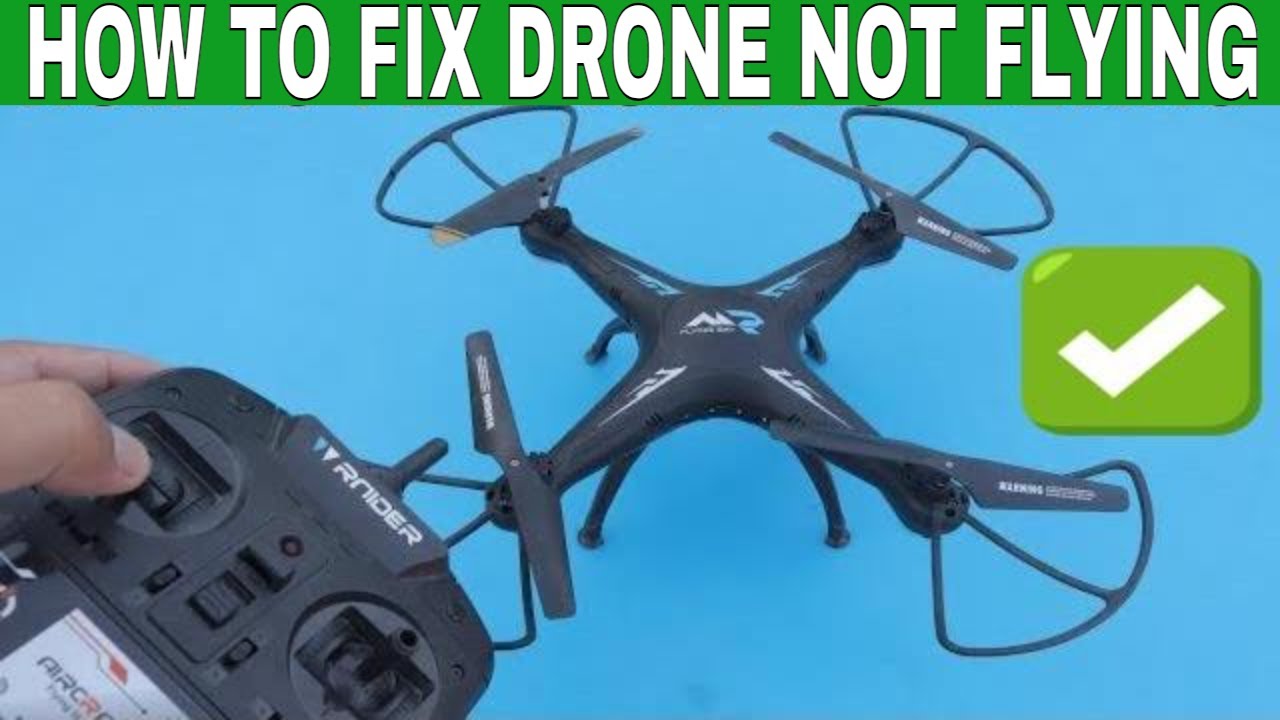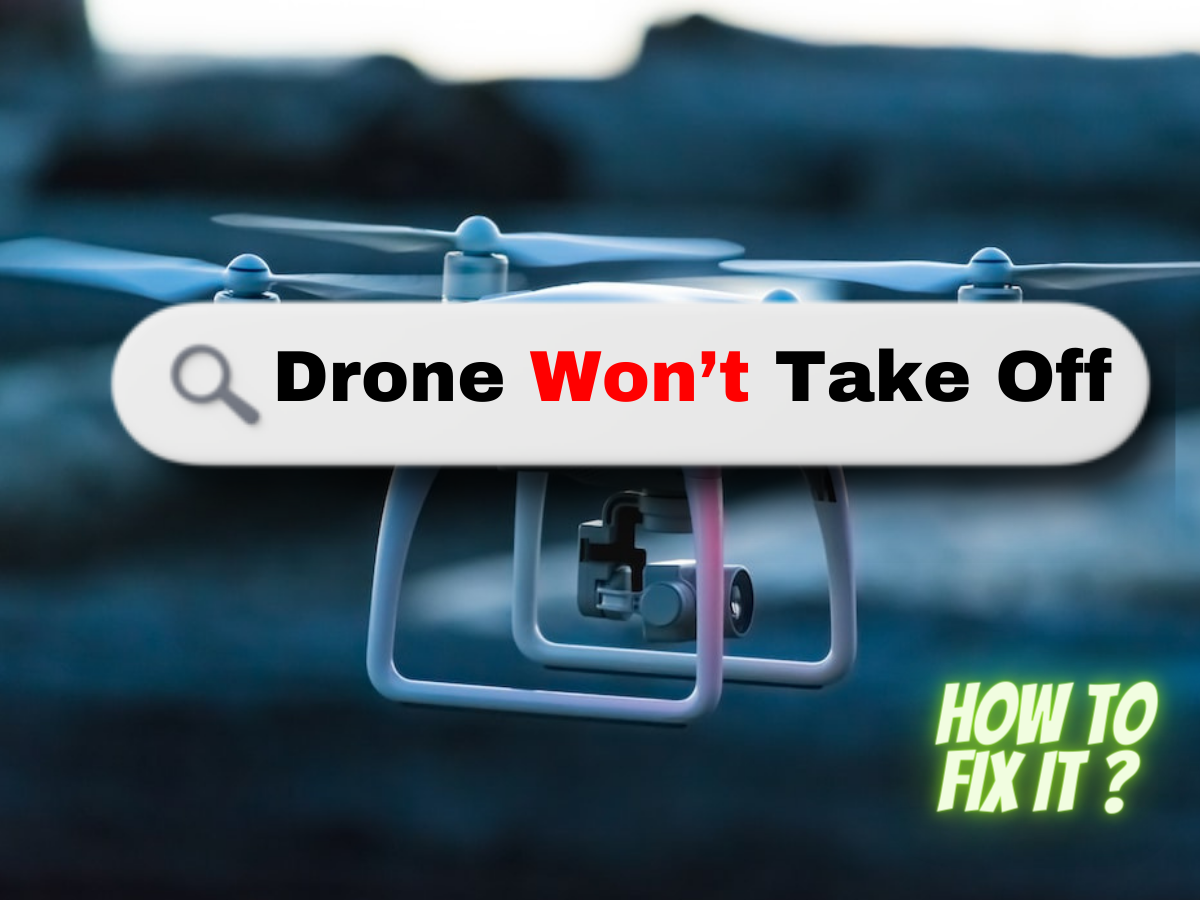
Is your drone refusing to take flight, leaving your aerial adventures grounded? Don't fret, because we've got your back! How To Fix A Drone That Won’t Take Off,In just a few simple steps, you can troubleshoot and resolve the most common issues that prevent your drone from taking off.
First, make sure your drone's battery is fully charged and securely connected. A weak or loose battery connection is a frequent culprit behind drones not taking off. Next, inspect the propellers for any damage or debris that might be obstructing their rotation. Clear any obstructions and ensure the propellers are securely attached. If your drone still refuses to ascend, recalibrating the gyroscope and compass can often work wonders.
How To Fix A Drone That Won’t Take Off ? Complete Guide
There are a few common reasons why a drone might not take off. Here are some troubleshooting tips:
- Check the battery - Make sure that the battery is fully charged and properly inserted into the drone. If the battery is low or not inserted correctly, the drone will not take off.
- Check the propellers -Make sure that all of the propellers are properly attached and undamaged. If a propeller is loose or damaged, it could prevent the drone from taking off or cause it to crash.
- Calibrate the compass -Over time, the compass on your drone can become misaligned. This can prevent the drone from flying properly and could even cause it to crash. To calibrate the compass, consult your drone's manual for instructions.
- Update the firmware -Drone manufacturers often release firmware updates that can fix bugs and improve performance. If you haven't updated your drone's firmware in a while, it's a good idea to do so. You can usually find firmware updates on the manufacturer's website.
- Check for obstructions -Make sure that there are no obstacles in the way of your drone when you try to take off. If there is anything in the way, the drone will not be able to take off safely.
If you've tried all of the above and your drone is still not taking off, there may be a more serious problem. In this case, it's best to contact the manufacturer for support.
Here is a more complete guide to troubleshooting a drone that won't take off:
1. Check The Battery
- Make sure that the battery is fully charged.
- Make sure that the battery is properly inserted into the drone.
- If you have a spare battery, try using that instead.
- If the battery is still not working, it may be damaged and need to be replaced.
2. Check The Propellers
- Make sure that all of the propellers are properly attached.
- Make sure that the propellers are undamaged.
- If a propeller is loose or damaged, replace it.
3. Calibrate The Compass
- Consult your drone's manual for instructions on how to calibrate the compass.
- Calibrate the compass in an open area away from any metal objects or power lines.
4. Update The Firmware
- Check the manufacturer's website for firmware updates for your drone.
- Install the firmware updates according to the manufacturer's instructions.
5. Check For Obstructions
- Make sure that there are no obstacles in the way of your drone when you try to take off.
- If there are any obstacles, remove them or move to a different location.
6. Check The Drone's Sensors
- Some drones have sensors that can prevent them from taking off if they detect certain conditions, such as low light or strong wind.
- Check your drone's manual to see if it has any sensors that could be preventing it from taking off.
- If necessary, disable the sensors so that you can take off.
7. Contact The Manufacturer
- If you've tried all of the above and your drone is still not taking off, there may be a more serious problem.
- Contact the manufacturer for support.
Safety Tips
- Always fly your drone in a safe and responsible manner.
- Be aware of your surroundings and avoid flying near obstacles or people.
- Follow the manufacturer's instructions for operating and maintaining your drone.
How To Stop Propellers From Spinning After A Crash?
There are a few ways to stop propellers from spinning after a crash. The best method will depend on the type of drone you have and the severity of the crash.
Method 1 - Use The Throttle Kill Switch
If your drone has a throttle kill switch, this is the quickest and easiest way to stop the propellers from spinning. The throttle kill switch is usually located on the remote controller. To use it, simply flip the switch to the "off" position.
Method 2 - Disconnect The Battery
If your drone does not have a throttle kill switch, or if the switch is not working, you can disconnect the battery to stop the propellers from spinning. To do this, simply unplug the battery from the drone. Be careful not to touch the exposed electrical contacts on the battery.
Method 3 - Use A Physical Object To Block The Propellers
If you cannot disconnect the battery, you can use a physical object to block the propellers and stop them from spinning. Be careful not to touch the propellers with your hands, as they can be very sharp. You can use a piece of cloth, a glove, or even a stick to block the propellers.
Method 4 - Let The Drone Run Out Of Power
If none of the other methods are working, you can simply let the drone run out of power. The propellers will eventually stop spinning when the battery is dead.
Important Safety Tips
- Always wear safety glasses when handling a crashed drone.
- Be careful not to touch the propellers with your hands, as they can be very sharp.
- If the drone is damaged, do not try to fly it.
- Contact the manufacturer for support.
Additional Tips
- If you are crashing frequently, you may want to consider installing a propeller guard on your drone. A propeller guard is a cage that surrounds the propellers and helps to protect them from damage.
- You should also regularly inspect your drone for cracks or other signs of damage. If you find any damage, replace the damaged parts before flying the drone again.
See Also: How does a drone look like from the ground?
FAQ's About How To Fix A Drone That Won’t Take Off ?
What To Do When A Drone Is Not Flying?
The first thing you need to do here is to look at the battery. Arguably the top reason why a drone isn't turning on is that its battery isn't charged. This usually happens when you take your drone right out of the box. Typically drone batteries are shipped with a minimal charge and must be charged before use.
What Makes A Drone To Lift Up?
Based on Newton's third law, each of these can be achieved using the quadcopter's four propellers. When the propellers spin, they push air down. Similar to a helicopter, pushing the air down is the action in Newton's third law of motion. The reaction is a force, called lift, which pushes the quadcopter up.
How Are Drones Jammed?
They do this by transmitting interfering radio signals, at bands usually used by drones. This radio frequency (RF) interference is at a power level high enough to “drown out” the signals transmitted by the operator and drone.
Why Can't I Fly My Drone At Night?
Yes, both Part 107-licensed and recreational drone pilots can now fly their drones at night without having to apply for a waiver. However, drones flying at night need to be equipped with appropriate anti-collision lights that are visible up to a distance of three statute miles
Conclusion
In conclusion, troubleshooting and fixing a drone that won't take off can be a manageable task with a systematic approach. By first checking your battery's charge and connection, examining the propellers for damage, and ensuring they are securely attached, you can eliminate some of the most common issues. If your drone still refuses to ascend, don't lose hope; consider recalibrating the gyroscope and compass to restore its flight capabilities.
Remember, patience and careful attention to detail are key when diagnosing and fixing drone issues. The satisfaction of getting your drone back in the air after successfully addressing the problem is not only rewarding but also ensures that you can continue to capture breathtaking aerial footage and explore the world from a new perspective. So, don't let technical glitches keep you grounded – take these troubleshooting steps, and let your drone take off to new heights of adventure and exploration!
